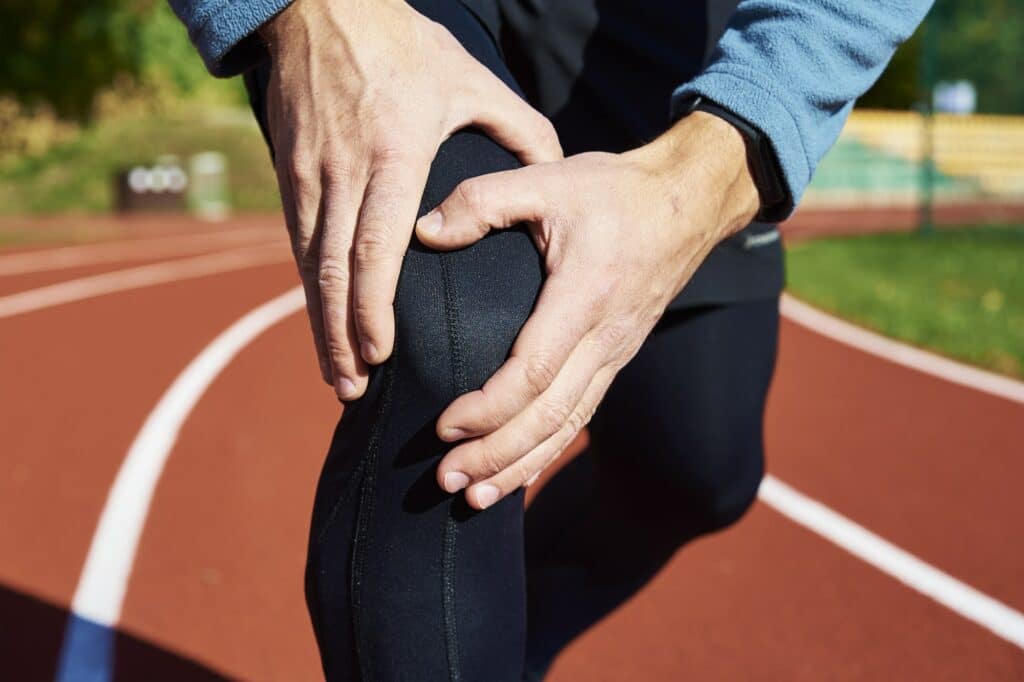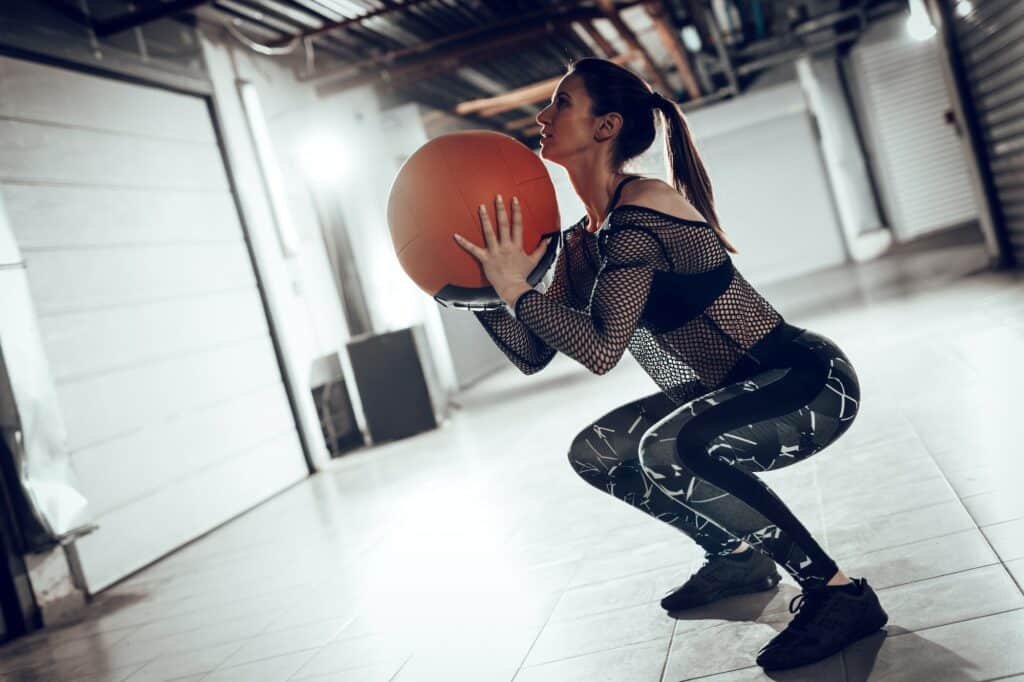If you’re a runner, you may have heard of “runner’s knee.” This term refers to a common knee injury known as patellofemoral pain syndrome, which can cause pain and discomfort in the knee joint.
Runner’s knee is a type of overuse injury and is a common complaint among runners, but it can also affect other athletes and non-athletes. In this article, we’ll explore the causes, symptoms, and treatment options for runner’s knee.

If you experience knee pain while running or participating in other physical activities, it’s essential to understand the underlying causes and take steps to address them.
This article will also provide information on how to prevent runner’s knee from occurring in the first place by incorporating knee strengthening exercises and other preventive measures into your routine.
Runner’s knee refers to a common knee injury that affects runners and individuals who participate in activities that involve repetitive knee bending, such as jumping and cycling. It is also known as patellofemoral pain syndrome, which describes pain in the front of the knee joint.
Runner’s knee syndrome is prevalent in the running community, with an estimated 40% of running injuries related to the knee joint.
Runner’s knee, or patellofemoral pain syndrome, is a common injury among runners. It occurs when the patella (kneecap) is not aligned properly with the femur (thigh bone), causing pain and discomfort. While the exact cause of a runner’s knee is not always clear, several factors may contribute to its development.
One of the most common causes of runner’s knee is overuse. This occurs when a runner increases their training intensity or volume too quickly, putting excessive strain on their knees. Running on hard surfaces, such as concrete, can also contribute to overuse injuries. Runners should always aim to increase their mileage gradually and incorporate rest days into their training schedules.
Biomechanical issues, such as poor running form or muscle imbalances, can also contribute to a runner’s knee. For example, weak quadriceps muscles may cause the patella to pull to one side, causing pain and discomfort. Runners should strengthen their leg muscles and improve their form through gait analysis and expert advice.
Wearing inappropriate footwear can also lead to the development of a runner’s knee. Shoes that are worn out or do not provide enough support can cause the feet to roll inward or outward, putting undue stress on the knees. Investing in high-quality running shoes suitable for your foot type and running style is essential.
The most common symptom of a runner’s knee is pain around or behind the kneecap, which usually worsens while running, walking downstairs or sitting for prolonged periods. The pain is often described as a dull, aching sensation, but it may also be sharp and stabbing. Some individuals may experience grinding or popping sensations when bending or straightening their knees.
Other symptoms of a runner’s knee include swelling, tenderness around the kneecap, and a feeling of instability or weakness in the knee. These symptoms may vary in severity, and in some cases, they may even subside during physical activity but return after a period of rest.
If you experience persistent knee pain, swelling, or instability, it’s essential to seek medical attention promptly. Left untreated, runner’s knee can cause long-term damage to the knee joint and may lead to chronic pain.
There are various treatment options available for individuals experiencing runner’s knee. It is important to seek professional medical advice to determine the best action.
This is the first line of treatment for a runner’s knee. RICE therapy involves taking a break from running or any other physical activity that aggravates knee pain.
Ice packs should be applied to the affected area for 20 minutes at a time, multiple times a day. Compression bandages can be used to reduce swelling. Elevating the knee above heart level can also help reduce swelling.
Physiotherapy can help alleviate knee pain and speed up the recovery process. A physiotherapist can provide exercises to strengthen the muscles around the knee, improve flexibility, and correct poor biomechanics.
Over-the-counter pain medication such as ibuprofen or acetaminophen can help alleviate knee pain. However, following the recommended dosage is important and not relying on medication as a long-term solution.
In severe cases where conservative treatments have failed, surgery may be necessary. The type of surgery will depend on the underlying cause of the knee pain, and a specialist surgeon should be consulted.
It is important to note that self-diagnosis and self-treatment should be avoided, as this can lead to further injury or complications. Seek professional medical advice for personalised treatment plans.
While a runner’s knee can be a frustrating and painful injury, individuals can take several preventive measures to reduce their risk of developing it.
Before beginning any exercise, it’s essential to properly warm up the body to prepare it for physical activity. A proper warm-up should include light aerobic exercises, such as jogging or jumping jacks, followed by stretching of the key muscle groups used during running, such as the quadriceps, hamstrings, and calves.
Cooling down after exercise is equally important and should involve gentle stretching and low-intensity activity to gradually lower the heart rate and return the body to its pre-exercise state.
Overuse is a common cause of runner’s knee, so it’s important to avoid overexerting the body by gradually increasing the intensity, duration, and frequency of exercise.
Running is a high-impact activity that places significant stress on the joints, so giving the body time to adapt and recover between workouts is essential.
While running is an effective way to build cardiovascular fitness and endurance, it’s important to vary your exercise routine to prevent overuse injuries.

Cross-training can involve activities such as cycling, swimming, or strength training, which can help to build strength and flexibility in different muscle groups used during running.
Wearing appropriate footwear is essential for preventing runner’s knee as it helps to support the feet and reduce stress on the knee joints. Running shoes should provide adequate shock absorption and stability, and fit properly to prevent rubbing and blisters.
Additionally, replacing running shoes regularly is important as they lose their shock-absorbing capacity over time.
Finally, incorporating knee strengthening exercises into your exercise routine can help to prevent and alleviate knee pain.
Exercises such as squats, lunges, glute bridges, and leg presses can help to strengthen the quadriceps, hamstrings, and gluteal muscles, which support the knee joint during running.
Knee strengthening exercises are an effective way to alleviate pain and prevent the recurrence of a runner’s knee. Performing these exercises correctly and consistently is essential to achieve the desired results. Below are some examples of knee-strengthening exercises that can benefit individuals with runner’s knee:
Squats can help strengthen the quadriceps, glutes, and hamstrings, essential muscles for runners. To perform a squat:
Lunges can help strengthen the quadriceps, glutes, and hamstrings and improve balance and stability. To perform a lunge:
Glute bridges can help strengthen the glutes and hamstrings, improving knee stability and reducing pain. To perform a glute bridge:
Leg presses can help strengthen the quadriceps, glutes, and hamstrings, improving knee stability and reducing pain. To perform a leg press:
Incorporating these knee-strengthening exercises into a daily routine can help individuals with runner’s knee alleviate pain and prevent further injury. It is essential to consult with a healthcare professional before starting any new exercise programme.